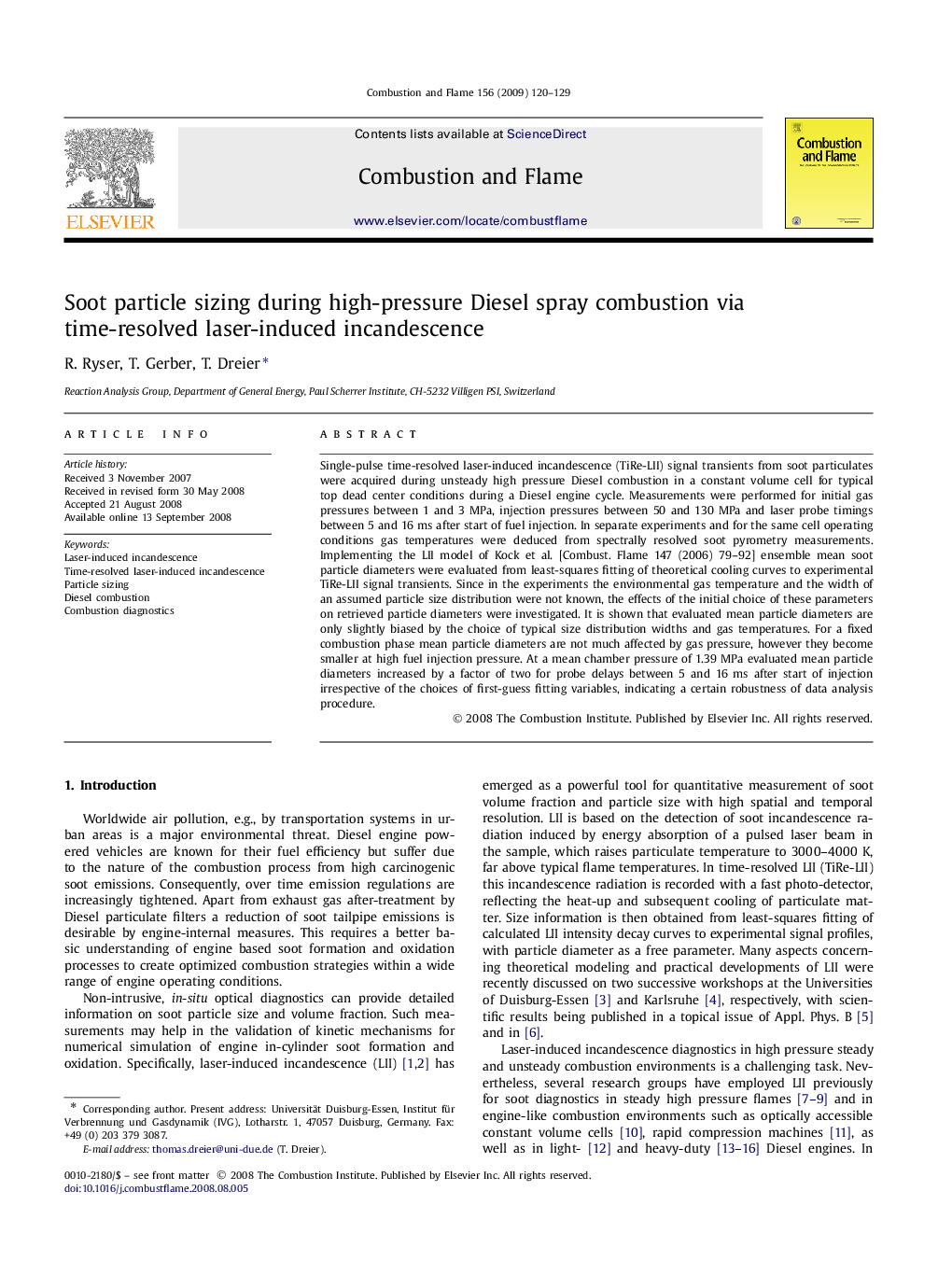| Article ID | Journal | Published Year | Pages | File Type |
|---|---|---|---|---|
| 169485 | Combustion and Flame | 2009 | 10 Pages |
Single-pulse time-resolved laser-induced incandescence (TiRe-LII) signal transients from soot particulates were acquired during unsteady high pressure Diesel combustion in a constant volume cell for typical top dead center conditions during a Diesel engine cycle. Measurements were performed for initial gas pressures between 1 and 3 MPa, injection pressures between 50 and 130 MPa and laser probe timings between 5 and 16 ms after start of fuel injection. In separate experiments and for the same cell operating conditions gas temperatures were deduced from spectrally resolved soot pyrometry measurements. Implementing the LII model of Kock et al. [Combust. Flame 147 (2006) 79–92] ensemble mean soot particle diameters were evaluated from least-squares fitting of theoretical cooling curves to experimental TiRe-LII signal transients. Since in the experiments the environmental gas temperature and the width of an assumed particle size distribution were not known, the effects of the initial choice of these parameters on retrieved particle diameters were investigated. It is shown that evaluated mean particle diameters are only slightly biased by the choice of typical size distribution widths and gas temperatures. For a fixed combustion phase mean particle diameters are not much affected by gas pressure, however they become smaller at high fuel injection pressure. At a mean chamber pressure of 1.39 MPa evaluated mean particle diameters increased by a factor of two for probe delays between 5 and 16 ms after start of injection irrespective of the choices of first-guess fitting variables, indicating a certain robustness of data analysis procedure.
